Living in a Lava Lamp
By Alyson Reed

Michael Walker
Michael Walker was born and grew up in Chicago, Ill. He grew up in a city that was also shook by the seventies “music-quake”. He eventually relocated to Southern California where he took up writing and pop-culture journalism. His articles have appeared in magazines such as Vogue, Esquire, Washington Post, Los Angeles Times, New York Times and many others.


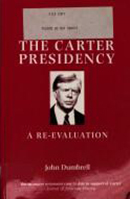

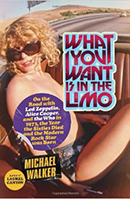
“The 1970s are the inevitable, pitiful, ridiculous aftershock of the 1960s youth-quake and therefore deserve to be lampooned into eternity as a theme park of wide lapels, disco and relentless self-absorption: That 70s Decade, the leisure-suited pleasure dome lit by lava lamp.”1 Michael Walker, author of What You Want is in the Limo, suggests that the shift in music, in artists and in American culture occurred in the year 1973. 1973 was the year that the notorious free-spirited attitude of the 1960s ceased to exist and the far-out culture of the 70s was constructed.
The 70s marked the end of an era, not just the previous decade. Ferdinand Marcos became president in the Philippines, LBJ died, Nixon was inaugurated president for the second time, Liddy and McCord were convicted for their involvement in the Watergate scandal, laws prohibiting abortion were overturned by the Supreme Court in Roe v. Wade, the Vietnam War ends when the Paris Peace Accords were signed, the Sydney Opera House opened, the World Trade Canter opened, the D.E.A. was founded, the A.T .M. was patented, Spiro Agnew resigned, Steve Jobs dropped out of college, Federal Express began shipping packages and the Arab oil embargo continued, to name a few events.2 At the same time, artists forged a path in a new direction for music. For “live” sessions, instead of mass gatherings in fields with musicians and audience intermingled-such as Woodstock-a distinct line was drawn between the two-that line being what separates audience members from the stage, the pedestal, musicians played upon. Walker chose three bands, The Who, Led Zeppelin and Alice Cooper, who experienced the most growth in the 70s, to exemplify his thesis. He uses statistics from the overall revenue they acquired as artists, the number of ticket sales at numerous concerts, the amount of money made off of the album’s released during this period and society’s overall response to them. 1973 was the year music and culture changed from what it was in the 60s. Led Zeppelin, The Who and Alice Cooper experience major highs and lows as they navigate through the industry and begin garnering attention from a larger population of people. Led Zeppelin went through a draught. Most of the material they released was not received well. Among their harshest critics were employees of Rolling Stone magazine. Reasons for the harsh criticism include, the direction bands took, the aura of their lyrics and instrumentalism, and the ambience surrounding them. Zeppelin’s sound of the 70s was much different than what music enthusiasts were used to listening to in say, 1969. Music was “a-changin’” and the critics-the world-needed time to adjust. The first two years of the 70s decade were a time of growth for musicians. They need a new sound, new lyrics, different subjects to sing and play about. They needed inspiration. The inspiration of the 1960s is what is commonly associated with the term “hippy”-“shrooms”, marijuana and LSD (acid). Inspiration in the 70s did not only include drugs familiar to people of the 60s, but also drugs stronger, with greater effect on the human system, such as opium, heroin, crack, cocaine and amphetamines.
Rock stardom and groups of people dedicated to following musicians on the road as if they were part of a cult-a.k.a groupies-were not popularized terms until after 1973. It was after the release of The Who’s Quadrophenia, Led Zeppelin’s Houses of the Holy and Alice Cooper’s Billion Dollar Babies, Muscle of Love and School Days that they truly struck the right chord on people. The fans of these groups were naturally “post-Woodstock youth starving for rock...”3 Recording engineers at this time, were more often than not motivated purely by money. They did not think in terms of innovation for various artists. Artists themselves were forced to be the creative thinkers or let some engineer or manager run their career into the ground because their eyes were only set on money.
Jimmy Page of Led Zeppelin and manager Peter Grant are one of Walker’s prominent examples of this. They raised the funds to record the first Led Zeppelin album themselves, which also granted them complete control. Page refused to be driven by money or simply trying to be the next big sensation with the biggest hit single. Music was more to this band than a career, it was a lifestyle. Instead, he eagerly helped create lyrics and a sound that, as critic Alex Ross described, “launched a no less ambitious raid on music history, commandeering rock, folk music, Delta blues, Indian and other non-Western music, and smatterings of classical tradition.”4
The change in performance art was most detectable in Alice Cooper’s shows. The performance the members put on became the “thing” to experience. Cooper was notorious for impersonating mentally insane characteristics while performing, drenching themselves in blood, even chopping off dummy heads with a working guillotine onstage.5 Alice Cooper aimed for the shock-factor, and that ended up helping them gain popularity among music enthusiasts. They created an entirely new genre of music, shock rock.
The Who’s Quadrophenia tour also marked an attempt to advance stage production, although it was not completely successful. For stage performances there, was to be projected footage of band members doing tricks with their instruments.6 The footage needed to match up with the band’s live playing and pre-recorded playing in the background. This technical feat was considered avant-garde, because the means to easily set this up and easily transport to and from each stadium were lacking.
The rock and roll musicians did seem to get carried away at certain times. Alice Cooper had to tone down performances in order to not offend the somewhat conservative attendees in certain cities. However, this started to damage the relationship between the band and their truly dedicated fans. What has become known as mosh pits today, is what occurred at Alice Cooper concerts. Audience members were getting involved in violent quarrels. The band members expressed curiosity as to whether the violence attendees engaged in happened simply because the amount of people in the venue was rapidly increasing, causing a greater potential for altercations, or if it was because audience members were under the influence of various hard-core drugs.7 It was most likely both.
Walker claims the shift, in music, in culture and in society, from the 1960s to the 1970s did not truly occur until the year 1973. Led Zeppelin’s Houses of the Holy, The Who’s Quadrophenia and Alice Cooper’s Muscle of Love, School Days and Billion Dollar Babies are an example of this shift since these three bands experienced a change in listener’s response to their music. They received more acclaim and also more criticism than ever before. There were several instances where all material Led Zeppelin produced in their early albums (Led Zeppelin I, Led Zeppelin II, Led Zeppelin III and Led Zeppelin IV) was not well liked by American critics. Alice Cooper is said to easily be one of the most hated bands, while also being one of the most famous and wealthiest, so, not too hated, because the material they released and their aura was captivating by rock enthusiasts. Alice Cooper’s performances were notorious for the shock generated among audience due to a large quantity of fake blood doused on the band members, dueling swords, baby dolls, snakes, electric chairs, nooses and guillotines.8
Author Michael Walker works as an author and journalist. Some of his pieces appear in Rolling Stone, Men’s Vogue, Esquire, New York Times, Los Angeles Times, Washington Post, Boston Globe, International Herald Tribune and GQ. He previously worked for The Daily Planet and served as an editor at the New York Times and Los Angeles Times. There is one additional book he has written, besides What You Want is in the Limo, titled Laurel Canyon: the inside story of rock and roll’s legendary neighbourhood. This work details the peak in population of Laurel Canyon in California during the 60s as musicians congregated here to create music. Walker grew up in Chicago, Ill. and eventually made his way out to Los Angeles, Calif. where he now resides. Living part of his childhood in Chicago is most likely where he was exposed to the music culture. Besides Los Angeles and New York City, Chicago experienced a great shift in culture through the music that shook through the 60s and 70s. This was the location of many original artists and styles of music popularized during this time period. Considering that he grew up on music from the 60s and 70s, there is an extreme potential for bias. The author grew up a fan of the very rock groups he charts out in his work. The very reason he marks 1973 as the eternal shift into the 70s is because that was arguably one of Led Zeppelin’s, The Who’s and Alice Cooper’s most successful-if not that, then most life changing-years in means of their career and stardom.
The years of a person’s “teen-age” are some of the most memorable. Considering Walker was a teenager when Quadrophenia was released, and intriguing albums by Alice Cooper, plus many others, Walker was sure to remember buzzing about this, listening to it, heck, even idolizing these groups like other fans did. The 70s was the decade of the young generation. The youth were craving to have a taste of what they got in the 60s, or just barely missed for being too young. What You Want in the Limo is a reflection on a time already passed, not a book written while living in the moment of the 70s. It was published in 2013, meaning most people Walker collaborated with also grew up in the decade. For the older generation in the 70s, many were keen on tradition and wanting to be conservative. This was sort of the older generations way of combatting the “peace, love” and “sex, drugs and rock and roll” sentiment that occupied the decade. In present time, most middled-aged people grew up on the rock and roll music, and therefore support it in general. The audience Walker is writing to is fellow children of the 60s and 70s who supported these groups, were fans of major bands of this decade, and therefore, support his argument that society truly shifted into being obsessed with stardom, money, V.I.P. access, rock and roll, sex and drugs when big bands such as Cooper, Zeppelin and The Who also hit super stardom in 1973.
Walker insists that the change in artists during the 70s impacted the music industry, audience and culture of music greatly. The downside to the work, as the author of a review on Kirkus points out, is Walker’s writing comes off extremely biased towards Alice Cooper.9 Most factual information about performances and details of the recording process are charted around Alice Cooper, followed by Led Zeppelin and The Who being the least mentioned of the three. Another glaring matter to the Kirkus reviewer, there is no new information that has not already been provided through other books, interviews, articles or even film the Walker covers. What You Want in the Limo is merely a look from a different perspective at the same culture the shook through America in the 1970s.
Wayne Wise sides with Walker in his claim. It was because of the three bands, who made the most money on tour in 1973- Zeppelin, Cooper, Who-that concerts became stadium events. Walker’s thesis is relevant to this day.10 After paying over one-hundred dollars to sit in “nosebleed” seats, audience members expect a far-out, excessive performance to watch. The over theatrics was highly popularized by Alice Cooper, and later bands such as Kiss, that this occurs.
What You Want in the Limo is an interesting and informative read for the youth of the 2000s who have never experienced first-hand the origins of rock and roll music. There are numerous preconceived notions of this decade in present time, and this book inadvertently corrects some. The down fall is, as other reviewers noted, Walker is heavily biased toward Alice Cooper and their giant foot print on the music industry and surrounding culture. The over-indulgence in just three bands takes away from Walker’s thesis stated in the first place. He notes the shift in the music industry, which affected the audience greatly, but that is the extent. He is very repetitive which takes readers away from his thesis. The book would be a greater success had their been more interviews and facts based upon audience members. Had the lifestyle teenagers and adults immersed themselves in been documented, the book would have been successful.
Walker views the 70s in America as a time of revelation rather than crisis. The music industry did not suffer because of rock and roll, but rather was boosted into infinity. Rock and roll’s presence in culture never diminishes, even after the 70s decade passed. Walker repeatedly stresses that the early 70s were a continuation of the 60s. He argues it took two years for society, art, people and culture to change, which occurred in 1973. Even after ’73, the 60s had a relatively firm grip on the new decade. Many musicians still drew inspiration off of experiences such as Woodstock. The wealth and superstardom achieved after ’73 contributed to the partying and drug usage, especially by bands and their groupies. The “hippies” of the 60s and their drug usage easily rubbed off into the new decade and added another risk to bands on tour after they began using cocaine, amphetamines, crack, marijuana, acid, heroin and opium.
Overall, What You Want is in the Limo is a fresh perspective on an over-told story. It is the film Almost Famous, except with real live bands and real life people, but the same concept. Walker is highly repetitive in his argument without getting to the proof through the culture shift in the 70s quick enough. Instead, he goes to great lengths to discuss released material of the three highest grossing bands of 1973. The band’s fan base, and these fan’s reaction to their material and performances, do help to highlight the change in audiences taste of music and what appealed to them visually and even morally based upon the lyrics and mood of the songs. The title of the book is reflective of the shift to obsession with stardom and backstage access to anything and everything. What people want is in a dark-lit limo. It is mysterious and enticing and most likely risky. It is fame, and parties, and wealth, and attention, and success. This is the change. The sixties were inclusive and the seventies were exclusive.
Footnotes:
- Walker, Michael. “Gentlemen, Start Your Egos.” What You Want is in the Limo. New York: Spiegel & Grau, 2013. Print.
- Walker, Michael. “Gentlemen, Start Your Egos.” What You Want is in the Limo. New York: Spiegel & Grau, 2013. Print.
- Walker, Michael. “Dancing Days.” What You Want is in the Limo. New York: Spiegel & Grau, 2013. Print.
- Walker, Michael. “Dancing Days.” What You Want is in the Limo. New York: Spiegel & Grau, 2013. Print.
- Walker, Michael. “Let the Show Begin.” What You Want is in the Limo. New York: Spiegel & Grau, 2013. Print.
- Walker, Michael. “She Said She Liked the Way I Held My Microphone.” What You Want is in the Limo. New York: Spiegel & Grau, 2013. Print.
- Walker, Michael. “Three for the Road.” What You Want is in the Limo. New York: Spiegel & Grau, 2013. Print.
- Walker, Michael. “Three for the Road.” What You Want is in the Limo. New York: Spiegel & Grau, 2013. Print.
- “What You Want is in the Limo.” Kirkus Reviews. Kirkus Media LLC, 15 June 2013. Web. 29 May 2015.
- Wise, Wayne. “‘What You Want is in the Limo’ details the decadence of the first billion-dollar rockers.” Pittsburgh Post Gazette. PG Publishing Co., 30 October 2013. Web. 29 May 2015.

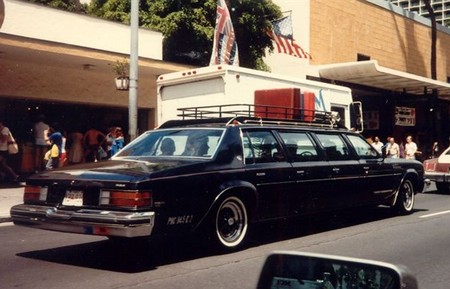
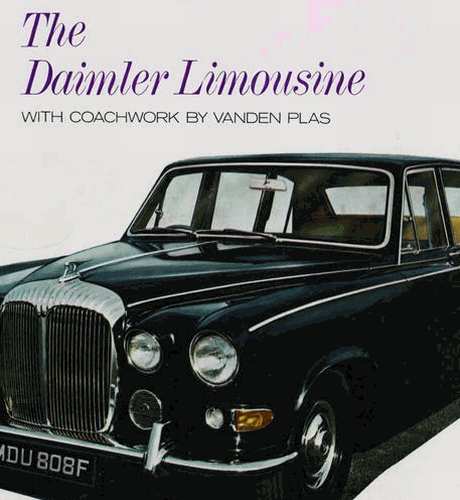
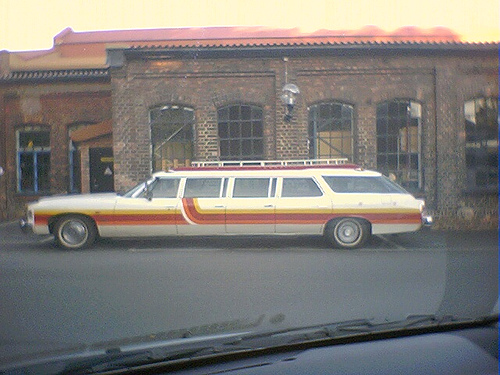
4 - 4
<
>